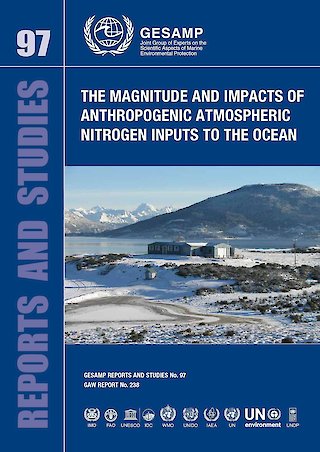
- 2018 #97 (52p.)
- Author(s): GESAMP
- Publisher(s): WMO
- Journal Series GESAMP Reports and Studies
This report provides a new estimate of how much of the fixed nitrogen[1] emitted to the atmosphere from fossil fuel burning and agriculture reaches the ocean in atmospheric deposition - rain and dustfall. The report compares these fixed nitrogen inputs to those from rivers and natural biological nitrogen fixation.
The report shows that human activity is now increasing the inputs of all fixed nitrogen to the oceans by about 50% and by proportionately more in local hotspots near high emission regions in southeast Asia, Europe and North America. Atmospheric transport is now the dominant route by which human produced fixed nitrogen reaches the open ocean beyond the continental shelf. These atmospheric fixed nitrogen inputs increase ocean productivity and hence ocean uptake of atmospheric carbon dioxide uptake, but the inputs are generally too small and dispersed to trigger damaging algal blooms. However, they may trigger such responses in localised hot spot regions and may also increase ocean emissions of the greenhouse gas nitrous oxide from some sensitive regions. Under plausible scenarios, atmospheric inputs are likely to remain at current levels to 2050, although the relative importance of ammonia emission from agriculture are projected to increase, while nitrogen oxide emissions from fossil fuel combustion will decrease, and this may lead to a decrease in the acidity of rainfall.
[1] Fixed nitrogen is nitrogen that can be used as a nutrient by all living organisms and excludes nitrogen gas which is inert and only available to a few specialised nitrogen fixing organisms.